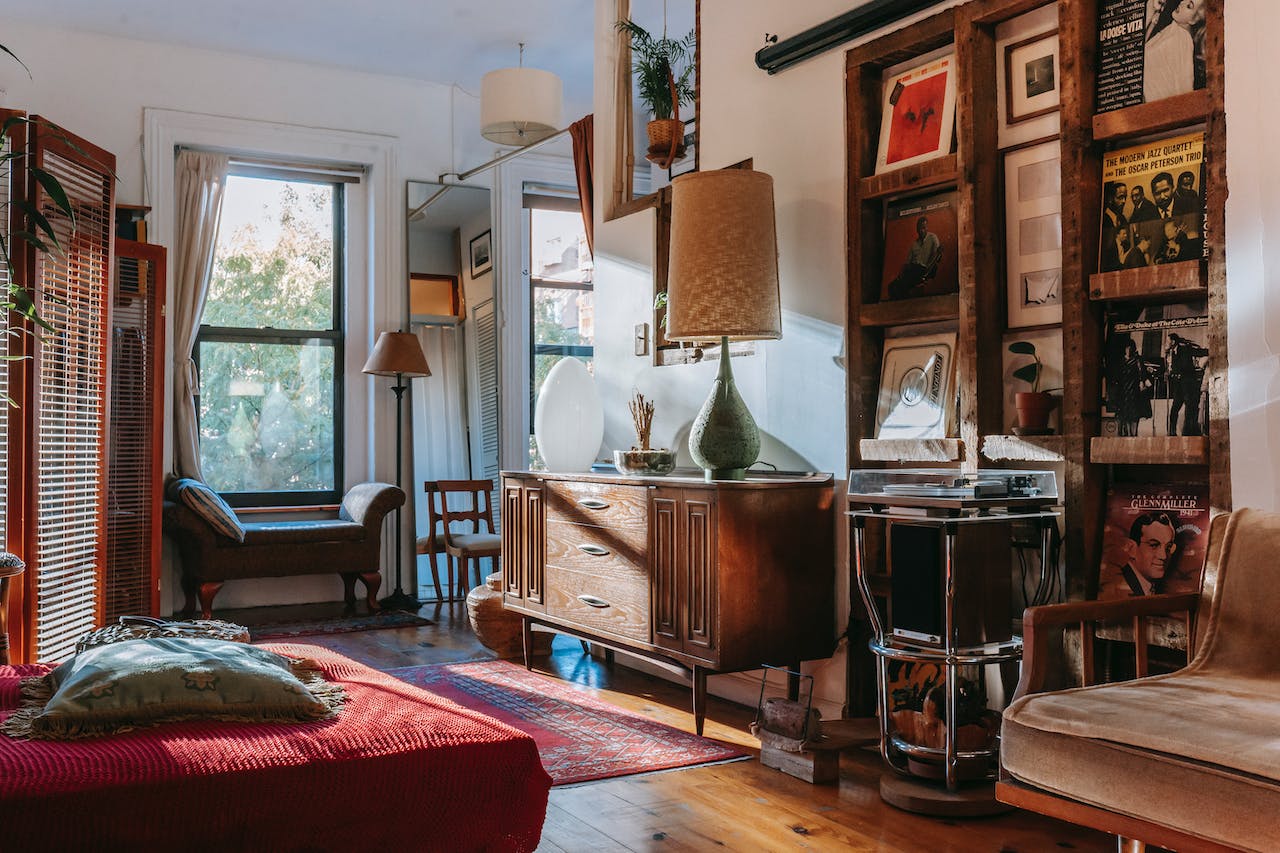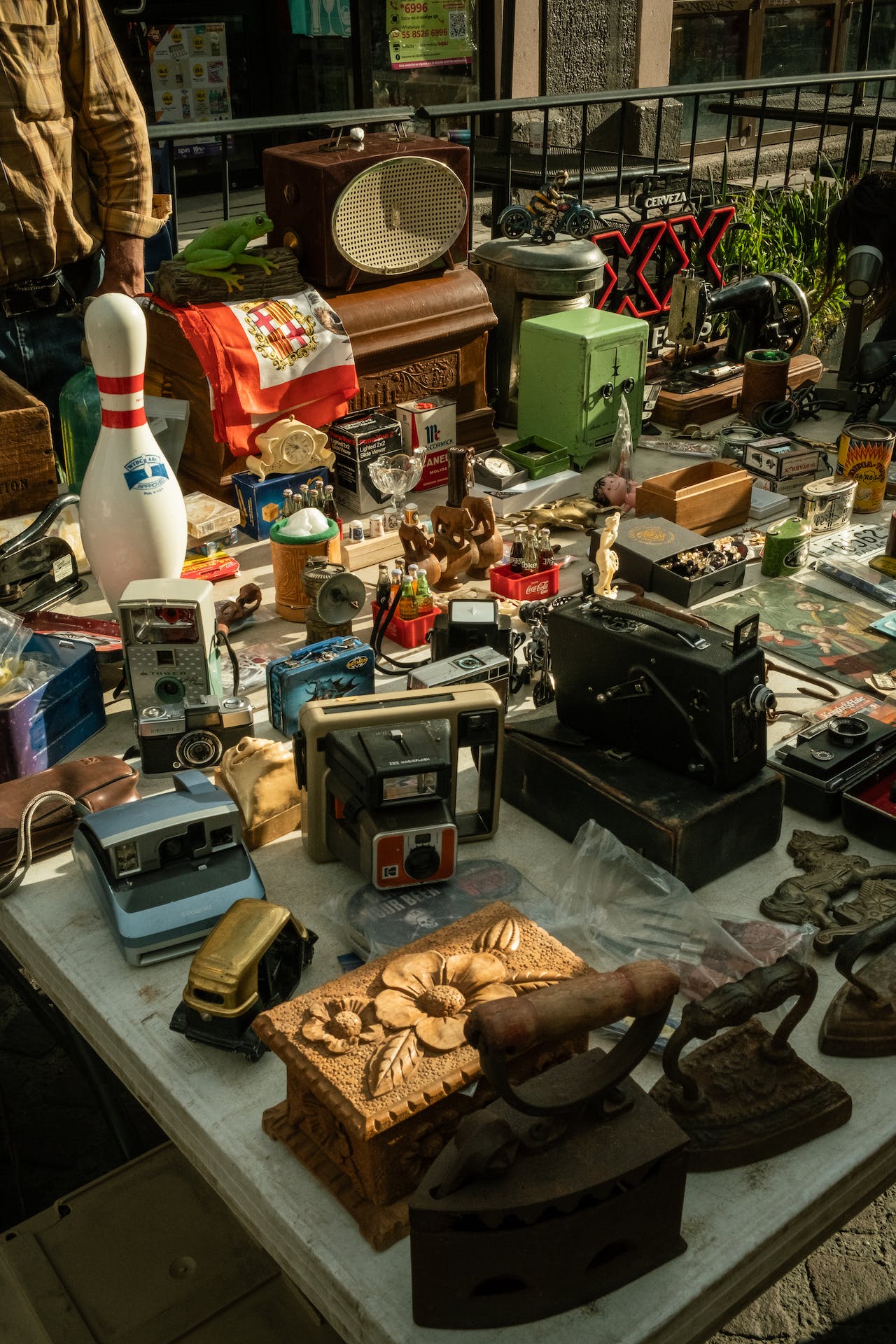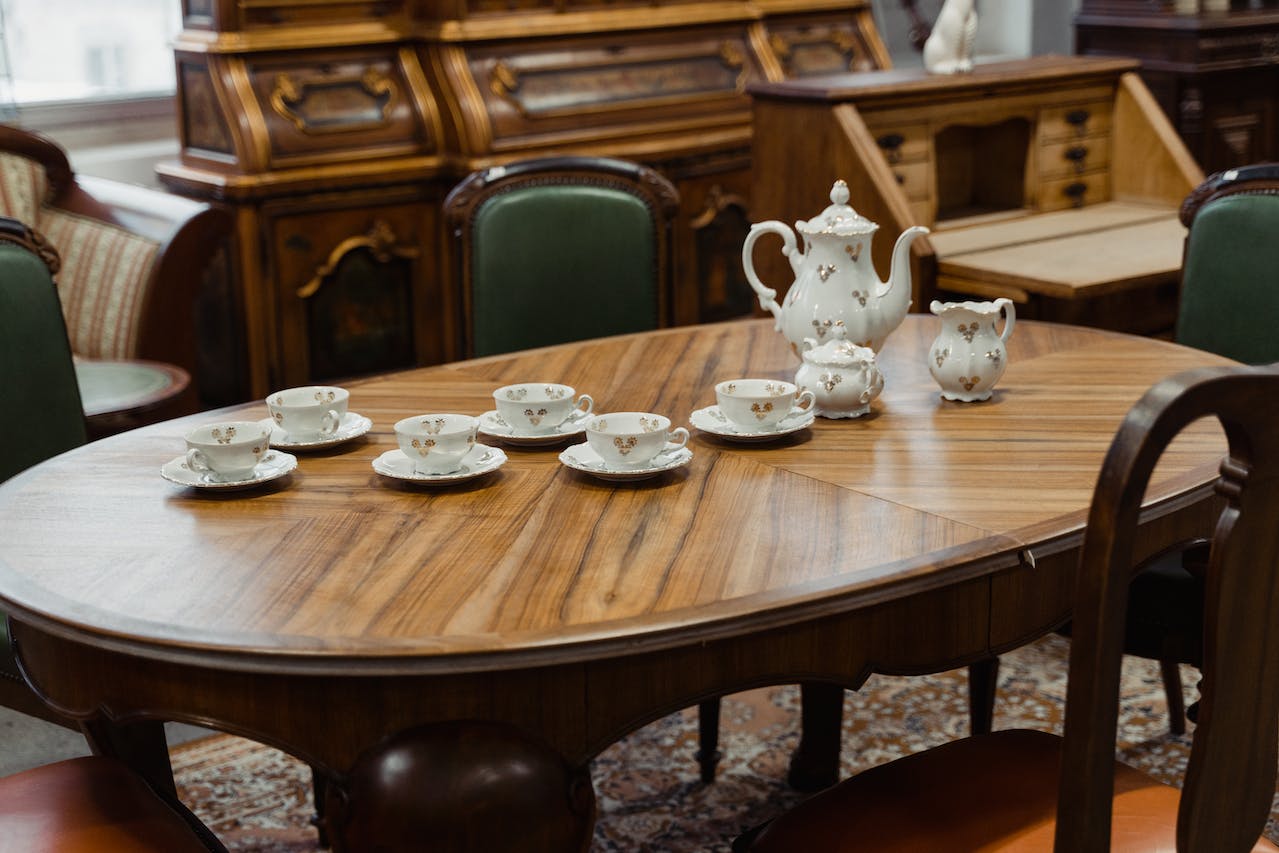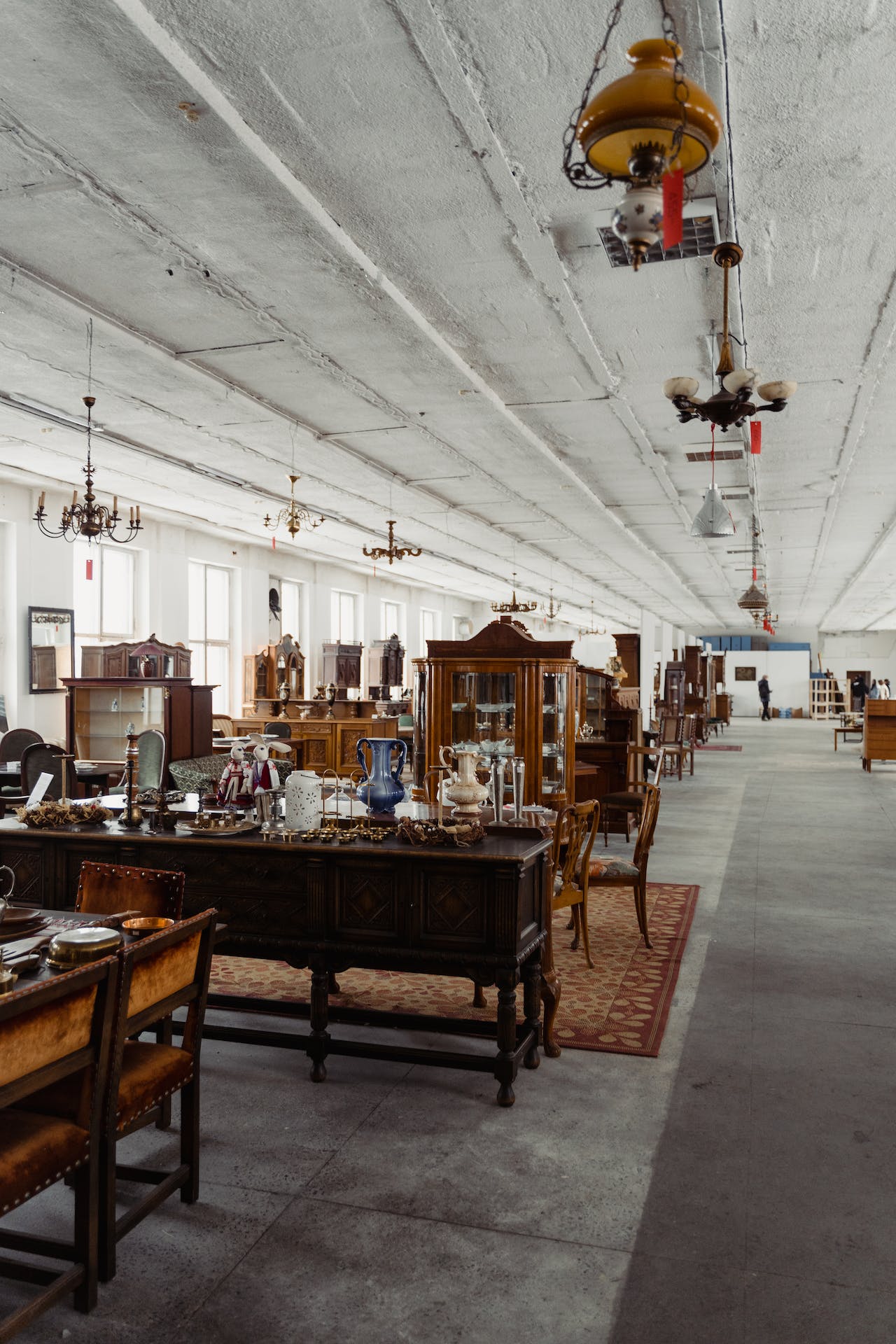If you have a penchant for things that are old and pretty, have historical significance, or have a fascinating story behind them – perhaps antique collecting is a hobby you would like to try. Maybe it’s the hint of old luxury that the chipping paint or patina seems to signify, or it’s the outdated and the mysterious that charms your soul.
Don’t lose sleep over the pretty thing that you saw at the flea market that you did not buy just because you feel like it doesn’t suit your trendy modern interiors. Antiques and vintage will always be in, and even if the term changes, old stuff will always have value. Why not start a collection where they can all go together?
This article will help you be a wise collector through these helpful tips that can guide you into the seemingly intimidating world of antique collecting.
Antiques vs. Vintage
Before we go on, let us first define what an antique really means and distinguish its difference from vintage. Understanding the distinction is crucial because the age of the item is a major factor in determining its value.
Antiques
Buyers and collectors in the know understand that antique does not describe anything old. Any seller who puts the “antique” label into something made in the ’60s (for instance) is just plain wrong. If they use the term “antique for anything relatively new, that designation should raise questions in your mind, as they may be mislabeling their wares or are just ignorant about what they’re selling. They might be using the word “antique” to jack up the prices.
A true antique is an object that is 100 years of age or older. This is the bare-bones and general definition that keeps things simple to grasp most of the time. Of course, the scale slides every year as more and more things become antique as years pass by. Something younger than that but still collectible is considered vintage.
But of course, rarely do antiques have a “produced by” or “manufactured by” date labeled on it. So how do they know?
If you don’t know exactly when a piece was produced (and sellers don’t know this for sure), there will be a bit of guesswork. But collectors do know that something made during the Edwardian period (around 1901 to 1910s) or older is already antique. Learning the characteristics of things made during different time periods (like arts and crafts, Art Deco, and art nouveau, to name a few) will help you track down the line between vintage and antique. It’s also good to be acquainted with revivals and reproductions of old styles, especially the popular ones like Art Deco and Victorian.
Some antique experts look upon old things more in terms of their historical significance or design, and they might consider some pieces as an exception to the rule and either include or exclude them based on their personal preference. But most people in the antique trade stick to the “100 years or older” rule.
Vintage
If you’re fascinated by things produced more recently, like the ’40s or the ’70s, you will be collecting vintage ones because they are not old enough to fall under the “antiques” category. During the ’80s and ’90s, the word “vintage” was largely used to refer to specific collecting genres like postcards, clothing, and jewelry that were not old enough to be considered antiques.
Nowadays, the term “vintage” refers to older items in more of a blanket way, as in shopping for “vintage clothes.” Many internet businesses have determined that anything that is 20 years or older falls under the “vintage” description. Just like antiques, more items fall into the vintage category each year.
Some collectors don’t want to deem stuff from the ’90s to early 2000s as vintage, so the term “collectible” is usually used. It applies to limited edition figurines, merchandise, and other mass-produced collectibles that aren’t in great demand or highly valued today by common vintage shoppers.
Tips for Collecting Antiques
Collecting antiques doesn’t have to feel intimidating, and you don’t need to shell out big bucks to start. If you’re considering starting a new hobby or want to add a bit of history or old-world charm to your home with an antique collection, these tips can help you get started.
1. Start with something you love
From figurines to kitchenware to antique tools, there are countless types of antiques to collect. When starting with antiquing, the key to choosing the right collectible for you is knowing what you love. It may be a collection of antique silverware if you like having people over for dinner, or you may want to spruce up your house with a variety of pieces of antique accessories, like table lamps and wall décor.
Before you start hunting for antiques to collect, take some time to think about what you might enjoy. You may start asking yourself these kinds of questions:
- What do you want to do with your collection? Will you be using them, or are they strictly for display?
- Is there an era in history you are fascinated about, like, for instance, the Victorian period or the Art Deco period?
- What kinds of things catch your attention when you walk through a flea market or an antique shop? What are the common denominator for those things?
- Are you fascinated by specific categories of antiques, like antique appliances or hand tools?
To make sure you will sustain this hobby, it must be outside of your interests and likes. Don’t be motivated by the idea of pleasing or impressing others with your collection – this will take the fun out of collecting.
2. Set a goal
As you start, it’s also important to consider your motivations. Why do you want to start collecting antiques? Your purpose will affect how you buy or sell the types of antiques you plan to get. Here are some of the common reasons why one may want to collect antiques:
- For fun: Some people just look at something old, and it makes them feel happy. If you’re doing it just for fun, then you won’t have to worry about its history, its value, or whether or not it looks great at your place – you can simply enjoy the thrill of the hunt.
- For decoration: Decorating with antiques is a fantastic way to add a bit of charm and character to your home. You can choose to collect antiques from a specific style period or simply choose pieces that work with your interior decorating style. You may also want to stick to a theme or with collectibles to make your décor look coherent.
- For investment: There are some types of antiques that can be of great value, and if you want an investment, you may try to go this path. Learn how to spot a valuable antique in the sea of fakes and vintage items, know how to get it for a reasonable price, and know that it can be a great investment.
3. Set a budget
A lot of people who enjoy collecting antiques are people who have more money than most. But whether or not you consider yourself rich, it’s always wise to set a budget. Determine how much you are willing to spend on your collection. It’s essential to set a limit to avoid overspending and ensure that your hobby remains enjoyable.
4. Educate yourself about how antiques are valued.
Once you have set your eyes on an antique that piques your interest – be it furniture, porcelain, glassware, textiles, or any other category – learn about them. Learn about different time periods and styles. Familiarize yourself with the characteristics and details that distinguish pieces from different time periods and styles. Pay attention to details like craftsmanship, materials, and markings. Develop the skills to recognize what’s genuine and what’s a reproduction.
The most important thing to learn when collecting antiques is how their values work. Sellers can ask any price for an item, but the piece is less expensive. Buying antiques is not like buying your regular stuff – you need to have an idea if the asking price is fair or if you’re being duped. There are several ways to determine the value of antiques, depending on some factors such as:
Authenticity
When collecting antiques, one of the most critical factors to consider is the authenticity of the item. To confirm an antique’s authenticity, carefully check any markings or stamps that reveal its origin and age. For more valuable items, consider getting input from appraisers and specialists to confirm their authenticity and value. Buying from a reputable antique dealer can also provide assurance and help you expand your knowledge.
Rarity
For serious collectors, rarity is an essential factor. Pieces that stand out due to their scarcity or distinctive historical significance are prized and well-sought after. Same with authenticity, experts can help prove the rarity of an item.
Condition
When you’re checking out an item, look for any signs of damage, wear, or restoration, as these factors can significantly affect its value. Ideally, go for antiques with minimal flaws and signs of careful maintenance over the years. But remember, don’t just buy for investment purposes; buy because you genuinely love the item.
Provenance
Provenance is the item’s documented history of ownership and origin, which can impact its value and desirability. An antique with an established and illustrious history – especially if a famous person previously owned it – may be considered more valuable than a similar item without a known provenance. Having a well-documented story provides a deeper understanding of the item’s journey through time. While not everything has a detailed report, historical records can support an item’s authenticity, ensuring it’s not a modern replica. But just like when assessing the condition, make sure to buy the item because you love it, not just for the story that comes with it.
5. Start your collection with the most easily accessible antiques.
If you’re not fixated on a specific type or category of antiques, it’s wise to start with items that are more easily accessible. Some of them include:
Books
If you want to start an antique library, get some antique books, especially those with interesting covers and illustrations. You may also focus on hunting books by well-known bygone authors. And while you’re at it, prepare to look for antique bookshelves too.
Glassware
Vintage glassware embodies the delicate craftsmanship and unique artistry of the times gone by. These things can serve as a window into their era – the etches, cuts, and coloration carry the mark of artisans who worked on molten glass that has stood the test of time. Look for Depression glass, milk glass, or colored glass.
Ceramics and Pottery
Antique porcelain tableware is often hand-painted by artisans and is highly valued for its decorative properties. Nowadays, transfer-printed blue and white china made in 19th century England is a common antique collectible or Staffordshire figurines of all types of animals or historical figures.
Silverware and Flatware
As we said earlier, you may collect antique silverware and flatware if you like entertaining guests at your dining table. These things can easily be a conversation starter, especially when paired with antique tableware.
Jewelry
Authentic antique jewelry that stands the test of time is precious and holds an allure that captivates collectors and fashion enthusiasts. Collecting antique jewelry, including brooches, earrings, and necklaces, can be expensive but worth the investment.
If you’re more interested in vintage items, here are some everyday things to collect:
- Postcards
- Prints and Artwork
- Toys
- Advertising Memorabilia (signs, tins, promotional items, etc.)
- Clocks
- Lamps
- Textiles (linens, quilts, etc.)
- Clothing
- Kitchenware (enamelware, utensils, mixing bowls, etc.)
6. Know where to collect antiques
Finding the right place to shop is essential to building a collection you’d be proud of. The idea is to start where there’s a lot, so your best bet to find something interesting is to go to places with shops that sell old stuff. Here are some prime locations to look for:
Antique Shops
Local antique shops often have a curated selection of items from different eras. They are treasure troves for antique collectors, as dealers of these shops can offer an alluring array of artifacts worthy of exploration. Dealers in these shops can usually offer information about the history and provenance of the items.
Flea Markets
Your local flea markets are great places to discover a wide range of antiques at different price points. Be prepared to spend time browsing through various stalls to find hidden gems.
Estate Sales
Estate sales can be treasure troves for antiques. These sales typically occur when someone passes away or is downsizing, and the entire contents of their home are sold. Keep an eye on local estate sale listings; you may find some antiques you’re interested in.
Auctions
If you can afford it, you can try looking at auctions to acquire great antiques. Auction houses or sites provide detailed information about each item. There are also auction websites and apps that allow you to bid in the comfort of your home.
Thrift Stores
Though you can only sometimes find antiques in them, thrift stores can sometimes be sources of great finds. Keep an open mind and visit these stores regularly, as the inventory can change frequently.
Online Platforms
Websites like eBay, Etsy, and other online marketplaces offer a vast selection of antiques. Just make sure that you are buying from reputable sellers, and pay attention to item descriptions and photographs.
Antique Shows and Fairs
These places provide every antique collector and enthusiast with an immersive and dynamic experience. Antique fairs and shows bring together dealers and collectors, giving you a unique opportunity to explore various antiques in one location and interact with knowledgeable sellers and fellow collectors.
Antique Malls
If there’s an antique mall near you, that’s a great place to start! Antique malls house multiple dealers under one roof. This can be convenient for exploring diverse antiques in a single location.
Specialized Collector Events
Some events cater specifically to certain types of collectors, such as vintage clothing fairs, antique car shows, or antique book expos. Attending these events gives you a great opportunity to find something amazing.
Specialty Shops
Some shops specialize in selling specific types of antiques, such as vintage jewelry, mid-century modern furniture, or rare books. Look out if specialty shops are catering to your interests.
Whenever you browse for antiques to buy, always note their prices and look, and when you see a similar pile at another store, run the numbers against each other. Once you build your knowledge base, that’s when hunting for antiques becomes fun.
8. Know what not to collect
While antiques are basically things that are at least a hundred years old, not all stuff that fall into that age range are ideal or even legal to own. It’s important to know what you should not collect, and some examples include:
- Native artifacts: There are laws related to buying and selling Native American artifacts, especially those with cultural or religious significance to the tribes. The legalities depend on where it came from, so it’s best to avoid them if you’re a novice collector.
- Ivory: Stay away from ivory carvings or sculptures, either elephant or walrus. It’s illegal to sell ivory antique pieces, so it’s unethical to buy them. The ivory trade is illegal because it impacts endangered elegant populations.
- Ancient artifacts: Antiquities from ancient civilizations, such as Italy, Greece, or Egypt, may raise legal and ethical concerns due to the potentially illegal manner in which they were acquired. Many countries have strict laws regarding the repatriation of items like these.
- Anything made of endangered species: Antiques made from parts of endangered species, such as tortoise shells, eagle feathers, certain furs, or taxidermy, can have legal and ethical implications.
- Nazi-era art: Items and artworks associated with the Nazi looting during World War II may be forcibly taken from their original owners.
Sensitivity is needed in items like these when considering whether to acquire them.
9. Do not be intimidated
When looking for antiques, you do have business rifling through the items, no matter how deep the pile is. Don’t be shy about it, and don’t be afraid to ask the dealers. Many antique shop owners and sellers of antique items are passionate about what they have and what they do, and they like telling it.
Also, don’t despise your small beginnings. If you are starting small by buying just one item, feel free to buy a lot more soon just because someone else is building their collection beautifully. The important thing is to have the items you like and are fascinated by. Think quality over quantity.
Conclusion
Collecting antiques is an interesting and fulfilling hobby, especially if you love history. Each piece tells a story, giving you a glimpse of the craftsmanship, culture, and history of the times past. Whatever your reason for collecting is, always prioritize items that will bring you joy.



